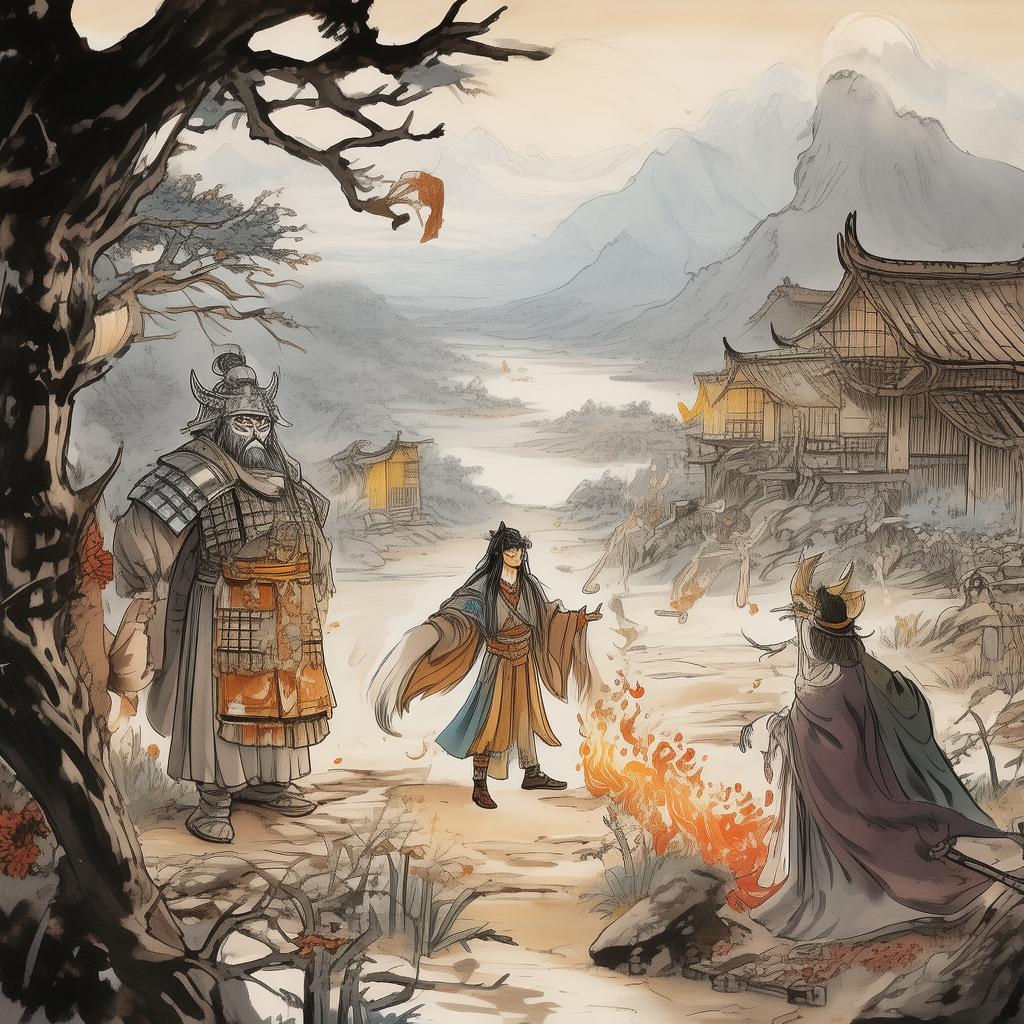The Cotton of the Lost Memory: A Gothic Horror
In the heart of the misty, untamed hills, there lay a village so secluded that time seemed to have forgotten its existence. The villagers spoke in hushed tones about the "Cotton of the Lost Memory," a relic of their ancient heritage that was said to hold the secrets of their forgotten ancestors. The cotton was a dark, threadbare cloth, with patterns that seemed to shift and change, as if alive.
The story begins with Li, a young and curious scholar, who has traveled to the village on a quest for folklore. He is greeted by the village elder, an old woman with eyes that seemed to pierce through time itself. She warns him of the cotton, saying that it is a dangerous artifact that has brought misfortune to anyone who has dared to touch it.
Despite the warnings, Li is fascinated. He believes that the cotton holds the key to understanding the village's dark history. He spends days studying the patterns, trying to decipher their meaning. As he delves deeper, strange things begin to happen. Objects move on their own, whispers fill the air, and shadows seem to dance in the corners of his eyes.
One night, as Li sleeps, he is woken by a cold hand touching his face. He looks up to see an old woman standing before him, her eyes filled with sorrow and a touch of madness. She speaks in a voice that is both familiar and alien, "You must find the lost memory, or the village will be cursed forever."
Li's curiosity turns to determination. He begins to investigate the origins of the cotton, uncovering tales of a long-forgotten ritual, one that was performed to invoke the spirits of the ancestors in times of great need. The ritual, it turns out, was not a blessing but a curse, one that bound the spirits of the ancestors to the village, trapped in a cycle of memory and sorrow.
Li discovers that the cotton is a medium for these trapped spirits, a way to communicate with them. As he attempts to reach out to the spirits, he finds himself pulled into a world of lost memories, where the past and the present blur together in a hauntingly beautiful tapestry.
The cotton leads Li to an old, abandoned house at the edge of the village. The house is said to be the place where the ritual was performed, and it is there that Li encounters the most chilling revelation. The spirits of the ancestors are real, and they have been waiting for someone to release them. But in doing so, Li must confront the truth about his own past, a truth that is far more disturbing than he ever imagined.
As the spirits begin to manifest, the village is thrown into chaos. The cotton, once a source of community, becomes a source of terror. The villagers, once united, now fight among themselves, driven by the voices of their ancestors, who demand retribution for their forgotten grievances.
Li, caught in the middle of this supernatural storm, must make a choice. He can continue to try to communicate with the spirits, hoping to find a way to free them, or he can turn his back on the cotton and leave the village to its fate. But as the cotton's patterns shift and change, it becomes clear that Li's destiny is inextricably linked to the fate of the village and its lost memories.

The climax of the story comes when Li finally understands the true nature of the cotton and the ritual. He realizes that the cotton is not just a relic of the past, but a living, breathing entity that has been holding the spirits captive for centuries. To free them, Li must confront the darkest part of himself, a part he has tried to suppress for years.
In a final, heart-wrenching moment, Li makes a sacrifice that will forever change the village and his own life. He chooses to become the bridge between the living and the dead, to become the cotton itself, to carry the weight of the lost memories and the spirits of the ancestors.
As the story ends, the cotton is no longer a source of terror but a symbol of hope. The village, once cursed, begins to heal. The spirits of the ancestors are released, finding peace at last. Li, forever changed by his experience, leaves the village with a newfound sense of purpose, carrying with him the legacy of the cotton and the lost memories of the ancestors.
✨ Original Statement ✨
All articles published on this website (including but not limited to text, images, videos, and other content) are original or authorized for reposting and are protected by relevant laws. Without the explicit written permission of this website, no individual or organization may copy, modify, repost, or use the content for commercial purposes.
If you need to quote or cooperate, please contact this site for authorization. We reserve the right to pursue legal responsibility for any unauthorized use.
Hereby declared.









